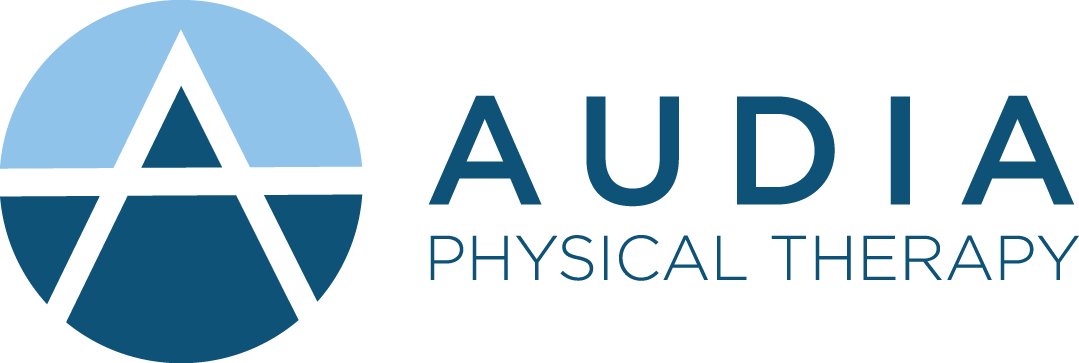The Perfect Posture Prescription From Dr. Audia
Learn Here the Ideal Sitting Posture at Your Desk
Sitting correctly at your desk is more than just finding a comfortable position; it's about optimizing your body alignment to minimize strain and discomfort. Here's how to achieve the perfect sitting posture:
Feet Placement: Keep your feet flat on the floor or use a footrest if needed to ensure stability and support for your lower body.
Knee Positioning: Your knees should be at the same level as or slightly below your hips to maintain proper blood circulation and reduce pressure on your lower back.
Back Support: Sit with your pelvis resting against the back in your chair. This will support your back without excessive work from your muscles and maintain the natural curve of your spine while preventing slouching.
Monitor Alignment
Your computer monitor's position plays a significant role in dictating your posture and eye comfort. Follow these guidelines for optimal monitor alignment:
Distance: Position your monitor at arm's length away from your eyes to reduce eye strain and maintain a comfortable viewing distance.
Height: The top of your monitor should be at or slightly below eye level to prevent neck strain and encourage a neutral head position.
Tilt and Brightness: Adjust the tilt of your monitor screen to minimize glare and reflections. Additionally, ensure the brightness is adjusted to a level that is comfortable for your eyes. Set a timer to look away from your screen every 20min for at least one minute to help your eye muscles stay strong.
Wrist Alignment for Typing
Typing for extended periods can put strain on your wrists and lead to discomfort or even injury. To maintain proper wrist alignment while typing, follow these tips:
Straight Wrists: Keep your wrists in a neutral, straight position, avoiding excessive bending up or down. This helps reduce strain on the tendons and ligaments in your wrists.
Wrist Support: Use a wrist rest to support your wrists during typing breaks or when not actively typing. This helps alleviate pressure on the wrist joints and promotes proper alignment.
Typing Technique: Type with light, fluid movements, avoiding excessive force or tension in your fingers and wrists. Relax your hands and wrists between typing sessions to prevent fatigue.
How to Sit with Great Posture Anywhere Without Giving 100% Effort
Maintaining good posture shouldn't feel like a constant struggle. Here are some effortless tips to help you sit with great posture anywhere:
Engage Your Core: Activate your core muscles gently to support your spine and maintain stability without exerting excessive effort. To do this, gently draw the area between your belly button and pubic bone straight back toward your spine. This should feel like a gentle narrowing of the waist.
Visualize Alignment: Imagine a string attached to the crown of your head, gently pulling you upward, promoting a natural elongation of the spine and a lifted posture.
Relax Your Shoulders: Keep your shoulder blades relaxed and gently tilted back, avoiding tension and allowing for better alignment of the upper body.
Keys to Great Standing Posture
Standing with good posture is equally important for overall health and comfort. Follow these key principles for optimal standing posture:
Weight Distribution: Avoid prolonged, excessive weight forward or backward on your feet. Your average center of gravity to be aimed for the knot In the laces of your shoes.
Knees Unlocked: Avoid locking your knees in standing to reduce strain on the knee joints and promote better balance and stability. Shifting your weight slightly toward your heels will naturally help your knees unlocked and help you void standing In a squatting position.
Upright Mid-Spine: Maintaining a neutral mid-spine position minimizes stress on your neck. To achieve this, think about “lifting your collar bones” In standing. This will Increase mid-spine extension and naturally keep your head over your shoulders.
3 Key Areas to Strengthen for Good Posture
Incorporating targeted strength exercises into your routine can help improve your posture and overall musculoskeletal health. Focus on these three key areas:
Core Muscles: Perform exercises such as planks, bridges, and bird-dogs to strengthen the muscles of your core, which provide essential support for your spine and pelvis.
Back Muscles: Incorporate exercises like lower trapezius reaches, and modified back extensions to target the muscles of your upper and lower back, promoting better posture and spinal alignment.
Shoulder and Neck Muscles: Practice shoulder blade squeezes, gentle pectoral stretches, and face-pulls with a light resistance band to improve mobility in the shoulders and neck. This will reduce the risk of discomfort and postural imbalances.
Schedule a Consultation with us!
Take a proactive step towards better health by scheduling a Neuro-Recovery Assessment at our clinic. Our dedicated team is ready to address your concerns and tailor a treatment plan that suits your needs. Don't wait – scheduling times may be limited so contact us to embark on your journey towards a healthier, happier you.
We're located at :
5963 La Place Court Suite 109 Carlsbad, CA 92008








